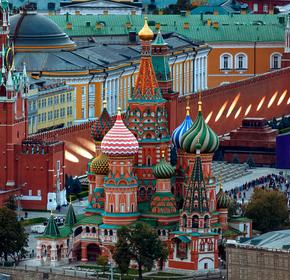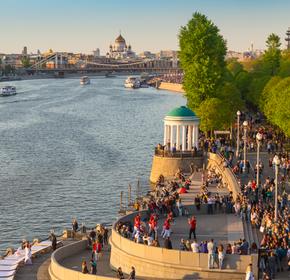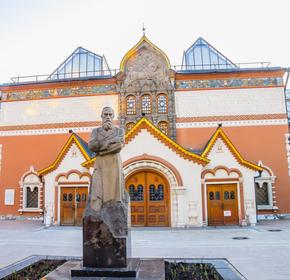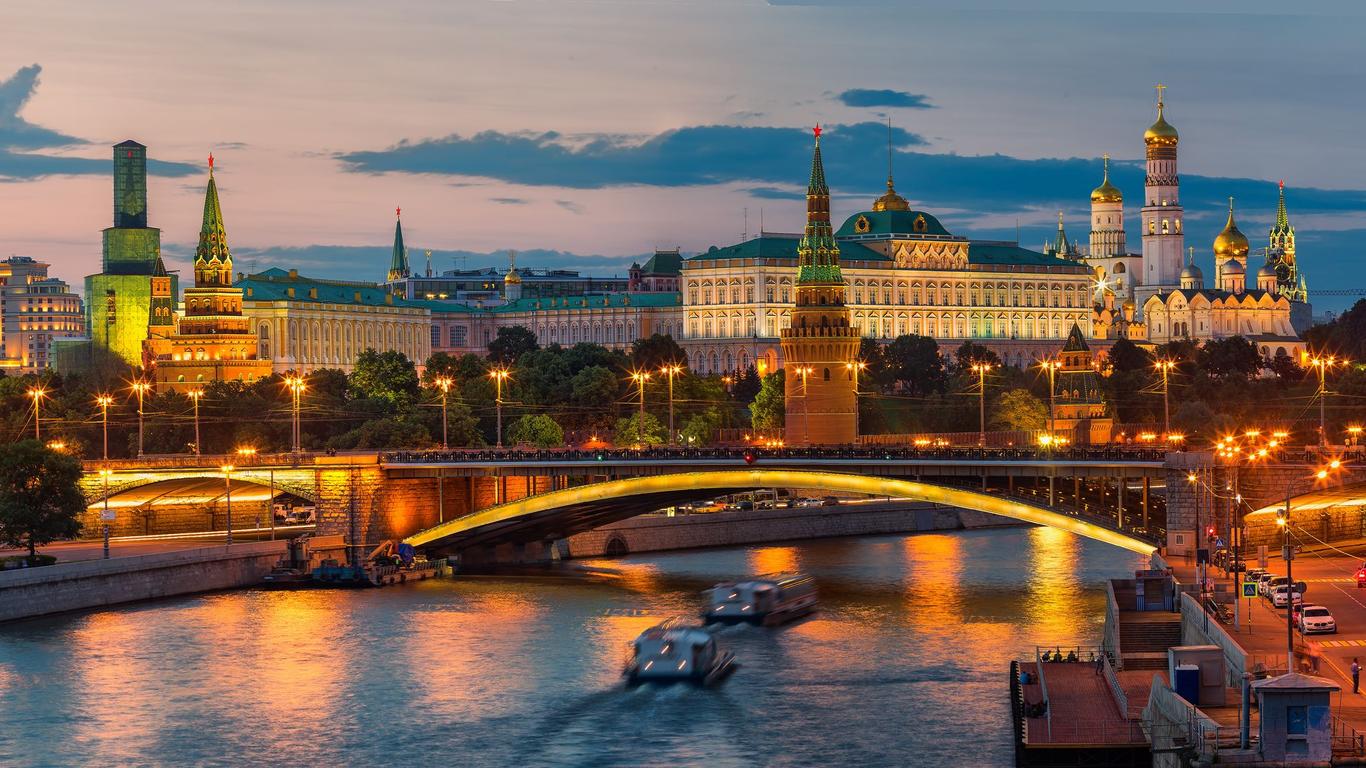
Moscow travel guide
Moscow Tourism | Moscow Guide
You're Going to Love Moscow
Moscow is sometimes known as "The Third Rome" and it doesn't disappoint. With the amazing architecture and history behind some of the buildings, it's the perfect combination of contemporary mixed with historic.

Everywhere from the Moscow Business District to the Red Square will have some beautiful building or park and a plethora of delicious Russian food options. You'll be immersed in history everywhere you go, but you'll also see the signs of modern-day tsars.
The people of Moscow are welcoming and kind and can't wait to show you everything their city has to offer.
Top 5 Reasons to Visit Moscow
1. It's a History Buff's Paradise
Moscow has a rich history, and not just from the time of the USSR. If you love history than the stories behind every building, landmark, and road in Moscow will have you chomping at the bit for more. Be sure to take a historic tour of the city.
2. It's an Architectural Dream
Moscow's architecture is unmatched, and the design and colors of every building are breathtaking. Visit the Kremlin, built in the 15th century, or Saint Basil's Cathedral from the 16th century.
3. Art Galleries and Museums Aplenty
There's nothing quite like Russian art, and Moscow is home to some of the world's most impressive collections. Be sure to visit the Tretyakov State Gallery or if you're into something more modern, the ARTPLAY Design Center and Flacon Design Factory.
4. The World-Renowned Subway Stations
Not many cities can claim their train stations as a drawcard, but the Moscow subway, built in 1935, is truly like walking through a royal castle. You can only imagine the engineering that went into building something so complex and impressive.
5. The Russian Theater
Probably the biggest draw to Moscow is the Russian Theater, which hosts everything from plays to ballet. The Bolshoi Ballet Company is among the most well-known symbols of Russia and experiencing this in person is incredible.
What to do in Moscow
1. Moscow Kremlin: Russia's Must-See
The first stop in Moscow is the Red Square - home to the iconic St. Basil's Cathedral with its multicolored domes, and the gateway to the Kremlin. Just past Lenin's Mausoleum, this fortified citadel was built for royalty. Overlooking the river, it boasts a density of cathedrals and palaces behind thick walls. Step into the State History Museum and the Museum of Fashion for contrasting but equally enthralling Russian learning opportunities, or enjoy a stroll through the Aleksandrovsky Garden.
2. Bolshoi Theatre: The Show Must Go On
The Bolshoi Theater is a historical gem. This grand institution has hosted the famous Russian opera and ballet for centuries, and the performances have never lost their grandeur. The most talented opera singers and ballet dancers keep coming from Russian schools. Naturally, it is the ultimate venue to immerse yourself when it comes to traditional performance. The little sister to the Bolshoi, Maly Theater, is just across the street.
3. Cathedral of Christ the Saviour: A Worthwhile Reconstruction
This Orthodox Christian church was one of the tallest in the world until it was demolished by Stalin in 1931, as he planned to have the "Palace of the Soviets" built. Of course, this idea never came to fruition, and the Cathedral of Christ the Savior was certainly significant enough to rebuild. Since 1997 it has become a huge attraction for its beauty as well as a symbol of the country's tumultuous history. The golden domes shimmer from across the city, and the interior is fabulously colorful.
4. Gorky Park: Where Everyone Comes out to Play
This "Central Park of Culture and Leisure" lives up to its self-proclaimed title, boasting newly renovated recreation zones for visitors of all ages. For the ultimate experience, hop on the Sokolnicheskaya Metro Line and get off at Park Kultury to walk over the Crimean Bridge - the first thing you will see is the Main Gate of Gorky Park. From amusement rides to ice skating rinks, activities abound. Not to mention the simple delight of strolling by the river or lounging on the grass.
5. State Tretyakov Gallery: One Thousand Years of Art
The largest collection of Fine Russian Art in the world is found in Moscow's Tretyakov Gallery. National glory is celebrated across the halls of this museum, giving artists a platform when their work is often overlooked in foreign collections. Particularly telling are the modern art galleries, which exhibit political art created largely in response to the fascinating and tumultuous history of Russia over the 20th century.
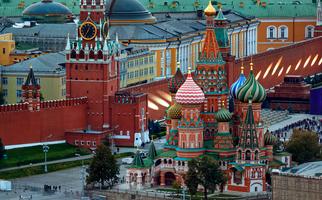
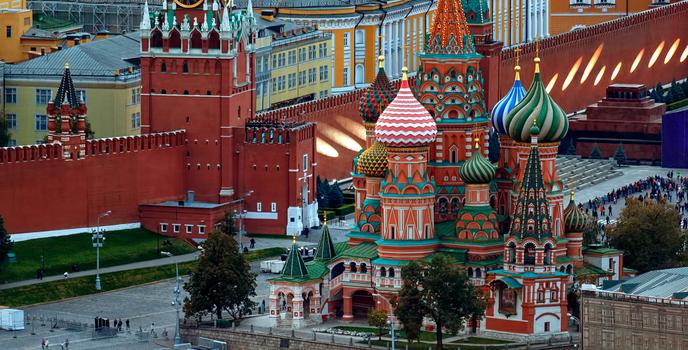






1. Moscow Kremlin: Russia's Must-See
The first stop in Moscow is the Red Square - home to the iconic St. Basil's Cathedral with its multicolored domes, and the gateway to the Kremlin. Just past Lenin's Mausoleum, this fortified citadel was built for royalty. Overlooking the river, it boasts a density of cathedrals and palaces behind thick walls. Step into the State History Museum and the Museum of Fashion for contrasting but equally enthralling Russian learning opportunities, or enjoy a stroll through the Aleksandrovsky Garden.
2. Bolshoi Theatre: The Show Must Go On
The Bolshoi Theater is a historical gem. This grand institution has hosted the famous Russian opera and ballet for centuries, and the performances have never lost their grandeur. The most talented opera singers and ballet dancers keep coming from Russian schools. Naturally, it is the ultimate venue to immerse yourself when it comes to traditional performance. The little sister to the Bolshoi, Maly Theater, is just across the street.
3. Cathedral of Christ the Saviour: A Worthwhile Reconstruction
This Orthodox Christian church was one of the tallest in the world until it was demolished by Stalin in 1931, as he planned to have the "Palace of the Soviets" built. Of course, this idea never came to fruition, and the Cathedral of Christ the Savior was certainly significant enough to rebuild. Since 1997 it has become a huge attraction for its beauty as well as a symbol of the country's tumultuous history. The golden domes shimmer from across the city, and the interior is fabulously colorful.
4. Gorky Park: Where Everyone Comes out to Play
This "Central Park of Culture and Leisure" lives up to its self-proclaimed title, boasting newly renovated recreation zones for visitors of all ages. For the ultimate experience, hop on the Sokolnicheskaya Metro Line and get off at Park Kultury to walk over the Crimean Bridge - the first thing you will see is the Main Gate of Gorky Park. From amusement rides to ice skating rinks, activities abound. Not to mention the simple delight of strolling by the river or lounging on the grass.
5. State Tretyakov Gallery: One Thousand Years of Art
The largest collection of Fine Russian Art in the world is found in Moscow's Tretyakov Gallery. National glory is celebrated across the halls of this museum, giving artists a platform when their work is often overlooked in foreign collections. Particularly telling are the modern art galleries, which exhibit political art created largely in response to the fascinating and tumultuous history of Russia over the 20th century.








Where to Eat in Moscow
Moscow is great for food of all types. There are high-end dining restaurants, some of which are world renowned, but there is also a lot of tasty street food and mid-range dining as well. For a luxury experience, try Savva in the city center, but expect to pay anywhere from ₽1,590 to ₽3,200 for a main. If you opt for street food, you'd be looking at paying around ₽400. For some lovely mid-range dining experiences great for solo travelers, couples, or families, check out Chaikhona No. 1 in Pushkin or Mari Vanna in Tverskaya. Mains here will be around ₽700 to ₽900. Drinks vary in price, but a beer will usually cost somewhere around ₽300.
When to visit Moscow
Deciding when to visit Moscow depends a lot on your budget and your durability. Russian winters are incredibly harsh with temperatures that reach below zero on some days and winds that will chill you to your core. This kind of weather isn't for everyone, but in the summer the temperatures can reach the high 80s. Shoulder seasons are a great time to experience Moscow because the temperatures are mild enough to enjoy the sights. Summers will always cost more because it's a peak travel period.
How to Get to Moscow
Plane
Most visitors come into Moscow by plane. The main airports are Sheremetyevo International Airport (SVO), Domodedovo International Airport (DME), and Vnukovo International Airport (VKO). Sheremetyevo International is approximately 20 miles from the center. The best way to get into Moscow is by the Aeroexpress, which costs ₽500. Domodedovo International is around 28 miles away. To get into the city, take the train from the Paveletsky Rail Terminal for ₽470 rubles. Vnukovo International is about 19 miles from the city, and you can take the train for ₽470.
Train
Although there are quite a few trains into Moscow from other European cities, it's not a particularly popular mode of transport since the journeys are quite long. There are nine train stations in Moscow, but the main one is Leningrad Station. The main train route is the overnight train from Warsaw on Russian Railways, which costs around ₽9,000.
Car
The M1 goes into the city from the west and the M7 goes into the city from the east. Moscow has two circular highways around it, the Third Ring Road and MKAD. This makes it easy to approach the city from any angle once you get in from the M1 or M7.
Bus
Similar to the train, approaching Moscow by bus isn't a very common way to get there. However, Lux Express has many routes to Moscow. You can travel from Riga, Tallinn, Berlin, Warsaw, Minsk, Budapest, and more.
Airlines serving Moscow
Where to stay in Moscow
Tverskaya Street - this area north of the business district is one of Moscow's most popular. Famous for its amazing cafes, nightclubs, and overall nightlife, this is the suburb to be in for a fantastic party time.
Popular Neighborhoods in Moscow
Petrovka - east of Tverskaya lies this district, which is a perfect upmarket area for boutique shopping. You'll also find lots of historic sights here like two ancient monasteries.
Arbat district - although this district is very touristy, its colorful appearance and cute eating establishments make it a lovely area to pass some time without spending a fortune.
Where to stay in popular areas of Moscow
Most booked hotels in Moscow
How to Get Around Moscow
Public Transportation
The public transportation routes in Moscow are excellent with a very well-connected subway network, trams, and buses. You can buy tickets ranging from a single journey all the way up to 60. One journey only costs ₽28.
Taxi
Unlike other large cities, taxi prices in Moscow are relatively reasonable. You can expect to pay a base fee of around ₽150, and then about ₽90 per mile. There are plenty of taxis around Moscow, so you shouldn't have any problems flagging one down.
Car
With multiple Hertz, Avis, Sixt, and Elite outlets, you'll have your pick of rental companies, and you can expect to pay around ₽2,403 a day. Rates become cheaper the longer you rent. For a three-day rental, expect to pay around ₽6,310.
The Cost of Living in Moscow
Shopping Streets
Moscow is great for high-end luxury shopping, but it also has many popular international stores that you would expect to see as well. The street for top-of-the-line jewelry and items is Tretyakovsky Proyezd, located in the city center. At Izmailovsky Park you'll find a large open-air bazaar where things will be much more affordable, but you will have to pay an entrance fee of ₽50.
Groceries and Other
Moscow is filled with cheap markets to find all kinds of delicious food at affordable prices. However, for your other grocery or personal needs, you'll find the big chain Auchan or the more upmarket Perekrestok. A loaf of bread will cost around ₽50, and a dozen eggs will cost about ₽109.
